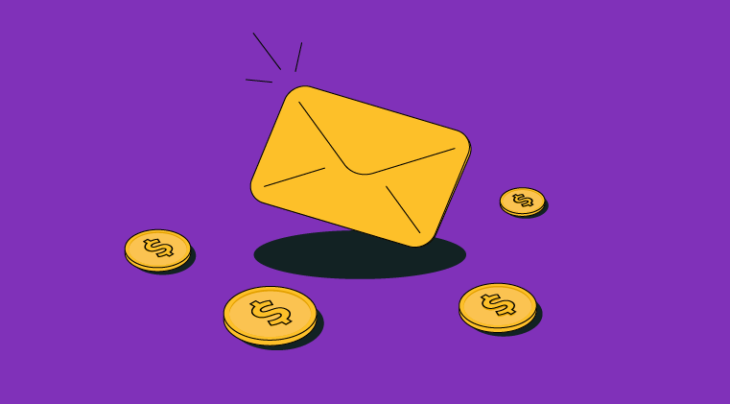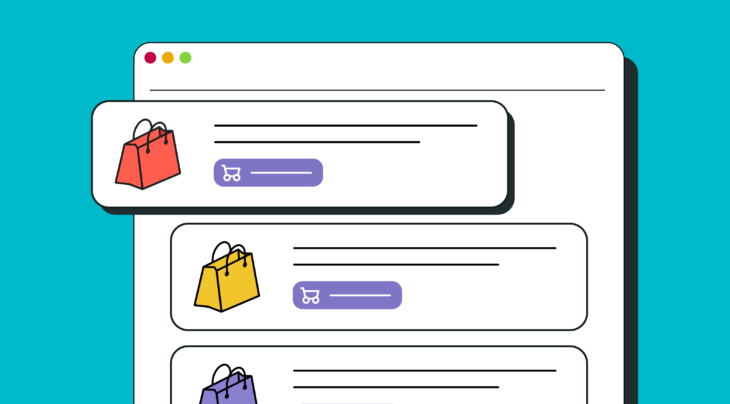The lawless era of email marketing is gone for good. It’s becoming increasingly difficult for businesses to keep flooding customers’ inboxes with promotional newsletters and expect their audience to just roll with it. Now, ethical and attentive senders get the upper hand.
Two key email providers — Gmail and Yahoo — have recently announced new rules for companies using bulk email sending. The changes will take effect in February 2024 and will be mandatory. Let’s discuss what these rules entail, why they were needed in the first place, and how to adapt to the new requirements.
- Unofficial email etiquette has become non-negotiable
- Detailed overview of the new requirements from Gmail and Yahoo
- Sender domain authentication
- One-click unsubscribe
- Low spam complaint level
- How to ensure compliance with the new rules from Gmail and Yahoo
- Set up domain authentication protocols
- Refine your email sending strategy
- Make sure your team is up to date with the new changes
- Summing up
Unofficial email etiquette has become non-negotiable
According to the IT support company AAG, approximately 3.4 billion spam messages are sent worldwide daily. In total, over 48% of emails sent in 2022 were spam. This is a huge problem both for email providers and email users.
Besides being a security threat, spam also wastes valuable resources and undermines user trust. Therefore, in the fall of 2023, Google and Yahoo officially established new requirements for bulk email senders in an attempt to make users’ inboxes cleaner and safer. These changes involve stricter requirements for authentication, spam prevention, and unsubscribe processes.
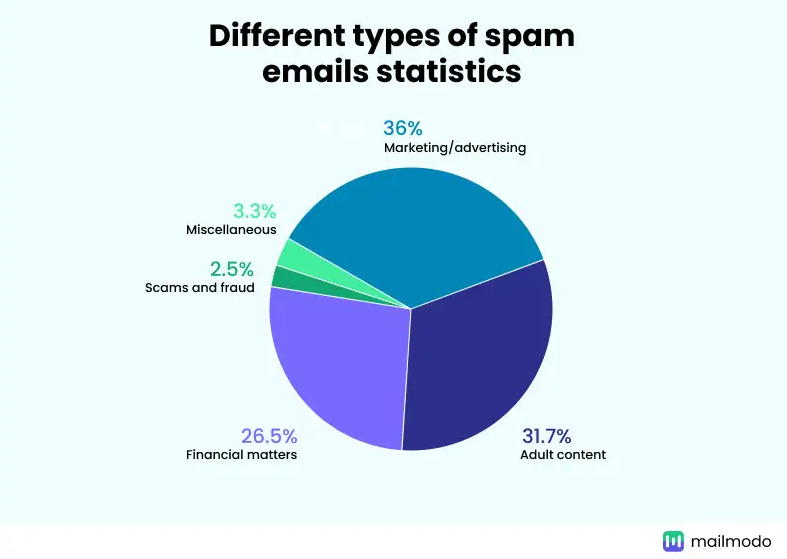
Some of these standards only apply to companies sending more than 5,000 messages daily to Gmail accounts, while others are mandatory for everyone. Yahoo doesn’t explicitly state who qualifies as a bulk sender, but it’s safe to assume that the thresholds are similar to those of Google.
Considering that these changes were introduced by the biggest players on the market, it can be seen as a new industry standard for email security, which other providers will likely adopt sooner or later.
Here is a quick overview of the new requirements:
- all senders must authenticate their sending domain;
- all senders should let recipients unsubscribe in one click;
- all senders should maintain their spam complaints below 0.3%.
Senders transmitting more than 5,000 messages per day are required to additionally configure the DMARC authentication protocol and align their sending domain with their SPF or DKIM domain.
These practices are nothing new. Similar recommendations have been voiced by email providers and email marketing experts many times. The only change is that starting from February 2024, the “unofficial email etiquette” will become the new norm for everyone.
Detailed overview of the new requirements from Gmail and Yahoo
The good news is that email providers have not introduced anything marketers haven’t heard of before. Most responsible senders already adhere to these rules. However, let’s take a closer look at the changes.
Sender domain authentication
You probably already know that sending bulk email campaigns from a free domain is not the best idea. Companies need to send campaigns from a dedicated domain they control to appear trustworthy and improve brand recognition.
Sender authentication (DomainKeys Identified Mail, DKIM) is a technology that allows the sender to prove that they own the domain from which the email is sent. DKIM works by using a digital signature added to the email header. When the recipient receives an email, they can optionally check the signature to verify that it is not a spoofed email.
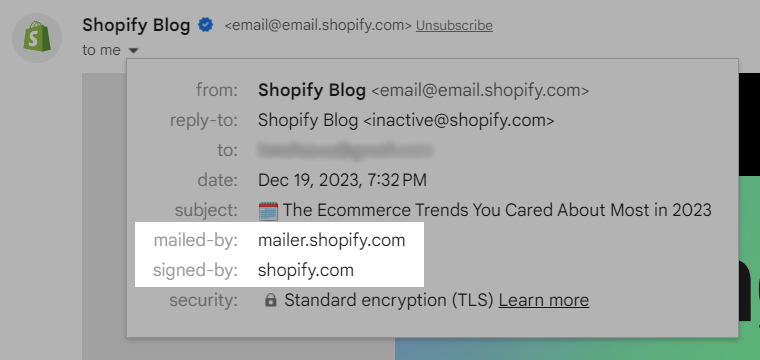
DKIM helps providers filter spam and protect users from unwanted or forged emails. To use this method, the sender needs to create a DKIM key using a generator and add it to their domain.
Here are some benefits of using DKIM:
- it increases trust in the sender’s emails;
- it improves spam filtering efficiency;
- it protects users from phishing attacks.
SendPulse helps senders increase email deliverability with the help of integrated SMTP. This allows you to send transactional emails from your website or email client. In addition, you get to track important metrics such as open rates, click-throughs, and so on.
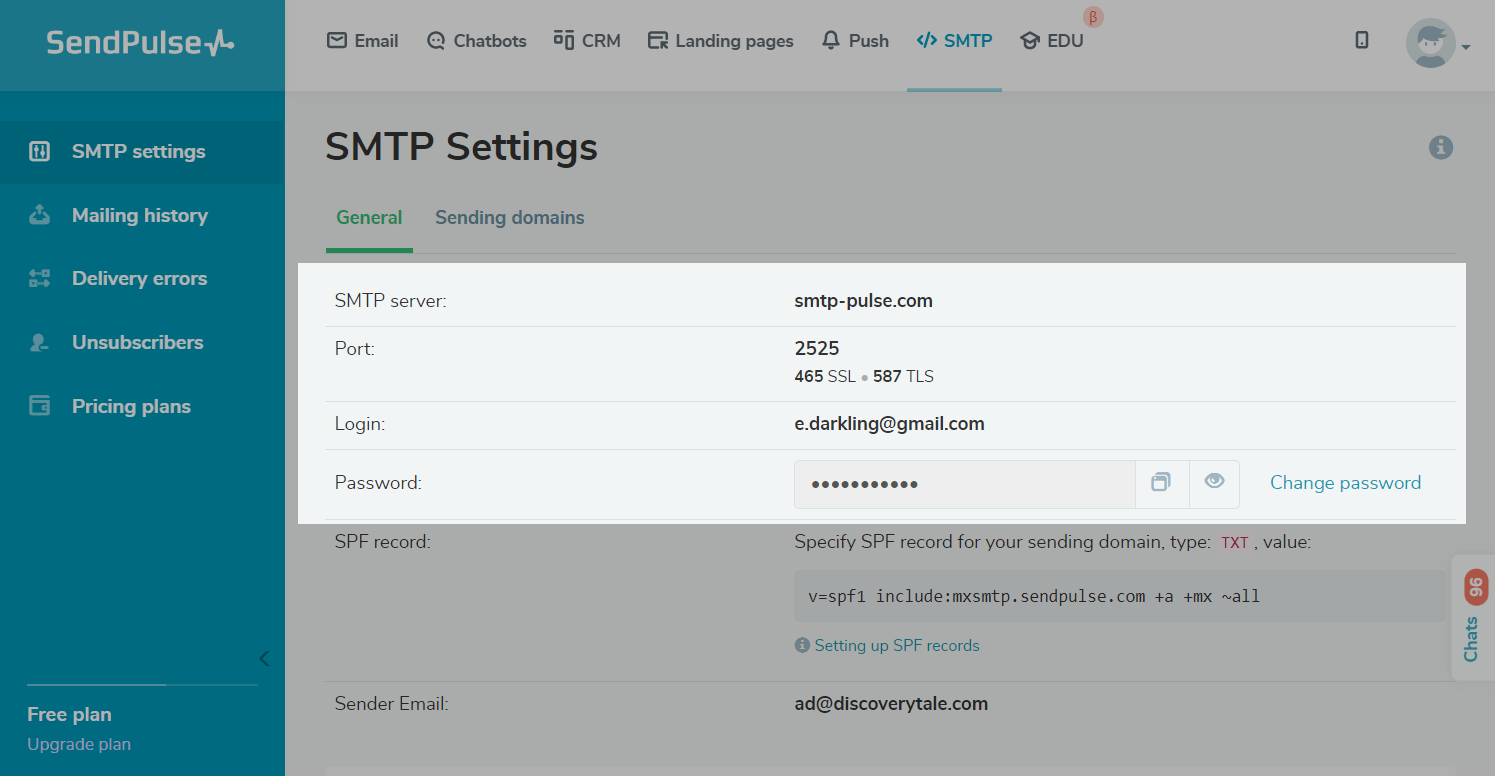
You can then generate a DKIM signature for your domain and add it to your domain’s DNS settings.
Google also recommends setting up an SPF record to prevent imposter scams. An SPF record contains whitelisted servers and specifies how to treat emails coming from other servers. This enables you to reduce the risk of someone sending spam on behalf of your domain. Just like with DKIM, you’ll need to generate a record for your domain and add it to your DNS settings.
One-click unsubscribe
Google and Yahoo require all senders to provide the option to unsubscribe in one step. Providers believe that users should not be forced to fill out tricky forms, log in to websites, or perform other unnecessary actions if they simply do not want to receive emails. According to the new rules, senders have a limited time to process unsubscribe requests, namely, only two days.
This should put an end to manipulations, such as hiding the unsubscribe link by making it the same color as the background of the page or requiring a lengthy survey to opt out of subscriptions.
Some senders do not allow unsubscribing from automated messages directly in the email. Instead, users need to change subscription settings in the app or on the website. Starting in February 2024, this will be considered a rule violation.
All emails created using the SendPulse builder, by default, contain highlighted, easy-to-find unsubscribe links in the footer.

The text and design of the link can be customized, but intentionally obscuring or deleting it is not recommended. The placement should also stay more or less the same — the footer of the email is where most users expect to find the unsubscribe link.
Low spam complaint level
The upcoming changes include recommendations regarding spam complaint rates for mass senders. Google clearly states that the sender’s spam rate should not exceed 0.3%. The simplest way to monitor this metric is by setting up a Gmail Postmaster Tools account. Yahoo doesn’t specify the exact spam rate limit.
If you notice an increase in spam complaints, it may indicate some of the following problems:
- you are sending emails too frequently;
- users receive information that they consider irrelevant;
- your emails feature low-quality, hard-to-read content;
- you send unsolicited campaigns.
For each of the issues, there is an individual solution, but overall, the situation can be saved by following these two rules:
- Initiate campaigns only when there is something valuable to communicate to the audience.
- Make your message clear, concise, engaging, and optimized for the most popular devices.
It’s crucial to get user consent before emailing them. Using the double opt-in subscription method, you can get high-quality, interested leads who are less likely to mark your campaigns as spam. In turn, buying or copying someone else’s mailing list is a sure way to get in trouble and ruin your domain reputation.
How to ensure compliance with the new rules from Gmail and Yahoo
The new requirements are straightforward and fair, and most email services were prepared for them long before they were due. Whichever email service you use, you’ll likely find a step-by-step instruction on setting up all the necessary protocols. With that in mind, let’s discuss what complying with the newest Google and Yahoo’s rules typically looks like in practice.
Set up domain authentication protocols
You don’t need any specific technical knowledge to set up the required protocols. Firstly, generate a DKIM key with the help of a free tool like DKIM Record Generator. Then, add the DKIM record to your domain’s DNS settings. Go to your domain control panel and find the DNS section. Finally, add a new DKIM record with the following parameters:
Type: TXT.
Data: v=DKIM1; k=rsa; p=your_dkim_key.
Check the DKIM record status using DKIM Checker or MXToolBox. If the DKIM status is active, you’re all set.
If you send over 5,000 messages daily, you need to configure the DMARC protocol. To do so, add DKIM using the algorithm described above and then generate a DKIM key using DKIM Record Generator or another tool. Add the DKIM record to your domain’s DNS settings with the following parameters:
Type: TXT.
Data: v=DKIM1; k=rsa; p=your_dkim_key.
Create a DMARC policy. It defines how recipient servers should react to messages that failed verification. Add the DMARC record to your domain’s DNS settings. Log in to your domain control panel and find the DNS section. Then, add a new DMARC record with the following parameters:
Type: TXT.
Data: v=DMARC1; p=none; pct=100; rua=your_email_address; ruf=your_email_address.
Check the DMARC policy status using DMARC Analyzer or DMARC Checker. If the status is active, the setup is complete, and you’re good to go.
Refine your email sending strategy
Users complain about spam even when receiving emails from legitimate senders. Here’s how to avoid it:
- Activate a two-step subscription method. This helps filter out inactive subscribers and bots.
- Check your mailing list. Remove invalid email addresses that ended up on the list due to errors or fraud. SendPulse has a free email verifier — a tool that helps confirm the activity and freshness of addresses, maintaining high mailing list quality. In the verifier, you can check individual emails or whole databases.
- Rebuild your mailing list if you haven’t used the old one for over a year. Stale addresses may negatively impact delivery metrics.
- Update your welcome email. This is your chance to create the right first impression on subscribers. Make sure the message sets the right expectations and leaves your recipients eager for more.
- Optimize your content. To avoid spam filters, eliminate red text, upper case text, excessive exclamation marks, spammy catchphrases, and large volumes of text in general.
It’s also important to establish the right sending frequency to avoid overwhelming your audience while keeping them fairly engaged at all times. To make your newsletter even more relevant, ask your subscribers to set their preferences regarding the number of monthly emails as well as the topics.
Make sure your team is up to date with the new changes
Inform your employees or contractors who build mailing lists, create content for campaigns, and schedule them about the newest requirements. Highlight three ground rules:
- Email campaigns can only be sent from your confirmed domain.
- The quality of content is more important than the quantity of messages.
- There can be no manipulations with the option to unsubscribe from your campaigns.
This alone will be enough to remain a reputable sender and comply with the latest standards of major email providers.
Summing up
The new rules from Google and Yahoo are an expected response to the growing problem of spam and phishing attacks. They aim to protect users from unwanted emails and keep email a reliable, safe, and clutter-free communication channel. Following the recommendations of email providers will help businesses get more yield from their marketing efforts and make sure their content is seen and interacted with.
Platforms like SendPulse will automatically boost your chances of getting your message through, thanks to built-in antispam recommendations and other features. Our tools allow you to regularly monitor your metrics, address issues that may lead to emails being marked as spam, and test different design and content versions to find what works best for your audience.
Create your free account now to give it a try!






